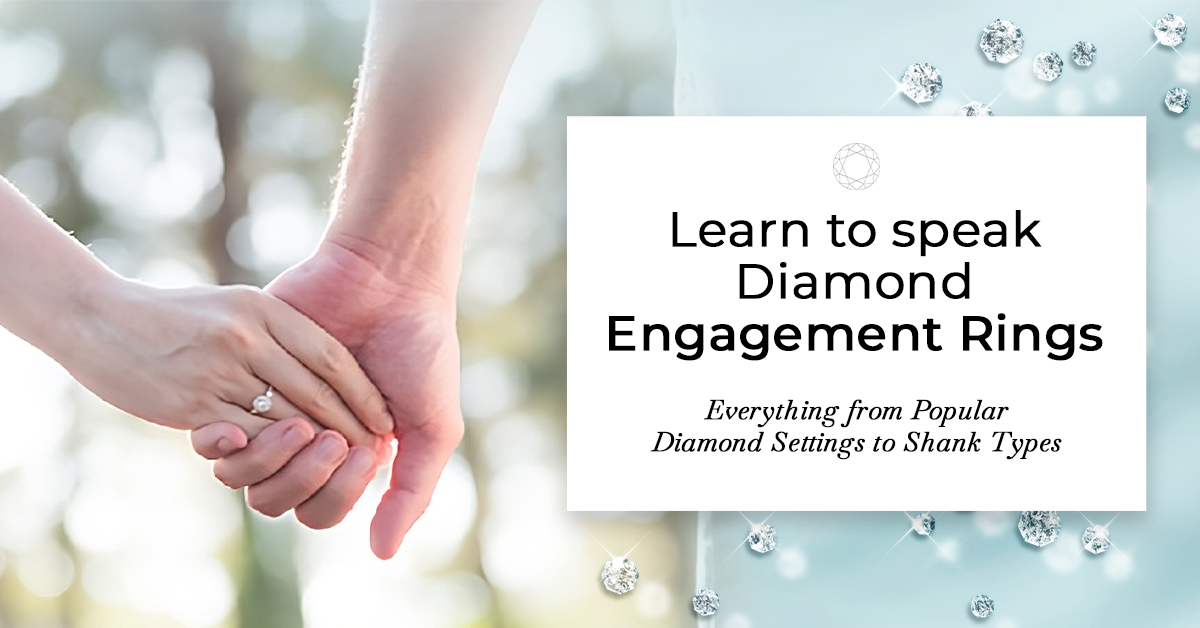
Are you considering buying a ring but need a translator to understand all the fancy terms jewellers use? Don’t worry; you’re not alone! In this blog post, I will decode some of the terminologies used in the jewellery world so that you can confidently speak “Jewelry” and make an informed decision before purchasing.
From the “Centre Stone” to the “FishTail Setting,” we’ve got you covered with a breakdown of the different parts of a ring and the various setting types. So, please grab a cup of tea, put on your favourite ring, and dive into the glittery jewellery world!
In This Article:
What are the Different Parts of a Diamond Ring?
What is a Comfort Fit and Standard Fit?
What are the Different Types of Shanks?
Are all Shank Bottoms the Same?
What are the Popular Types of Diamond Settings on the Shank?
What are the Different Types of Diamond Settings for the Rings Head?
The Bottom Line
FAQ on Diamond Engagement Rings
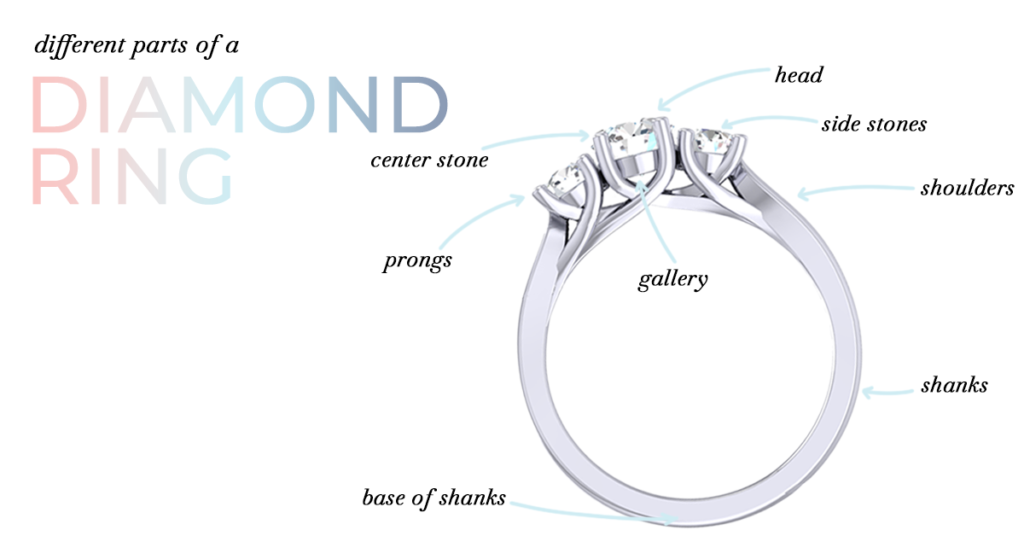
Let me explain the some of the different parts of a ring used with this image
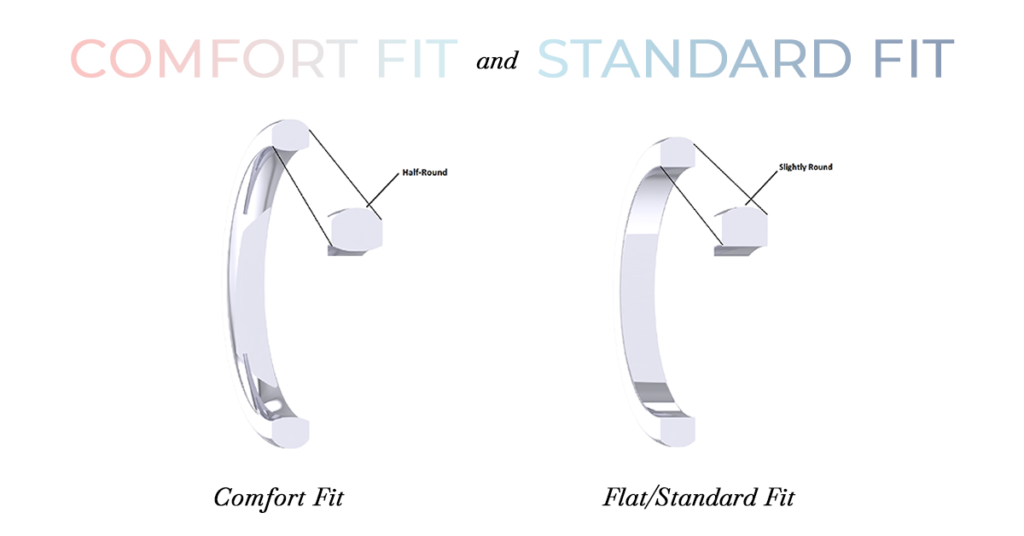
A comfort fit ring is a type of ring design that features a slightly rounded interior, providing a comfortable fit for the wearer. This design allows the ring to slide over the knuckle of the fingers with less resistance, making it easier to put on and take off. The comfort fit design also reduces the pressure on the finger, making the ring more comfortable to wear for extended periods.
On the other hand, a standard fit ring has a flat interior, which means that the ring sits flat against the finger. This design is more traditional and is commonly used for wedding bands and other formal rings.
Both fits are equally good and which one is better really depends on each person’s individual preference.
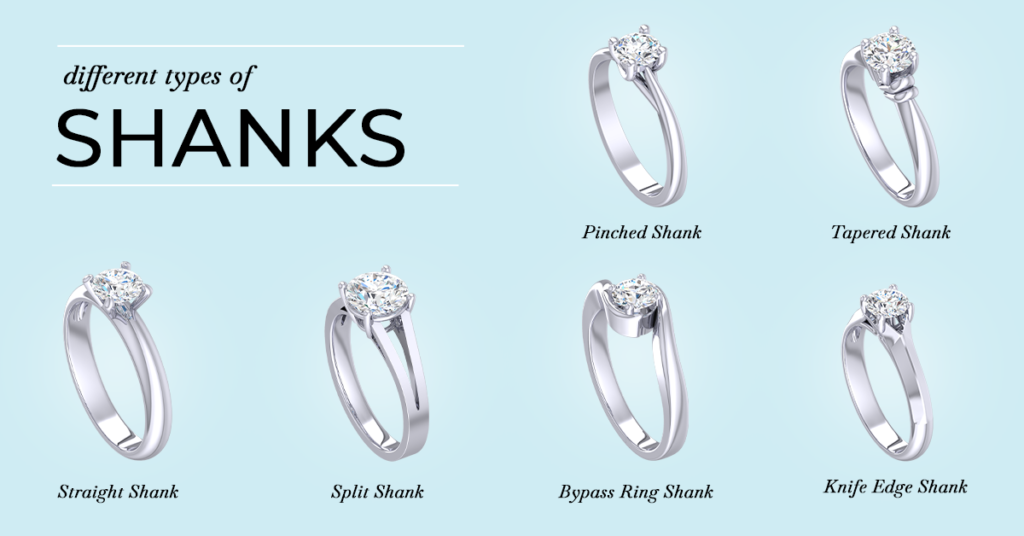
The Shank designs range from the traditional and simple ones to creative and modern ones. Some of the popular shank designs are straight shank, tapered shank, knife-edge shank, bypass shank, split shank, pinched shank, cathedral, and Euro shank.
Just as it sounds, this band of a ring is straight and does not taper off or split.
Here the band tapers off to a thinner section, either where the stone is set or in the opposite direction from where the stone is set making the stone look larger and making the band itself look more delicate.
A knife-edge ring shank is so called due to its sharp edge that runs along the outer edge. Obviously not razor sharp this shank adds a different look to a ring.
Here the band splits into two before it meets the stone at the top of the band giving the illusion of two bands.
In this shank the two ends of the band will not uniformly meet the stone. Each end of the band runs around the stone as if it is bypassing it creating the illusion that the band is flowing around or overlapping the stone.
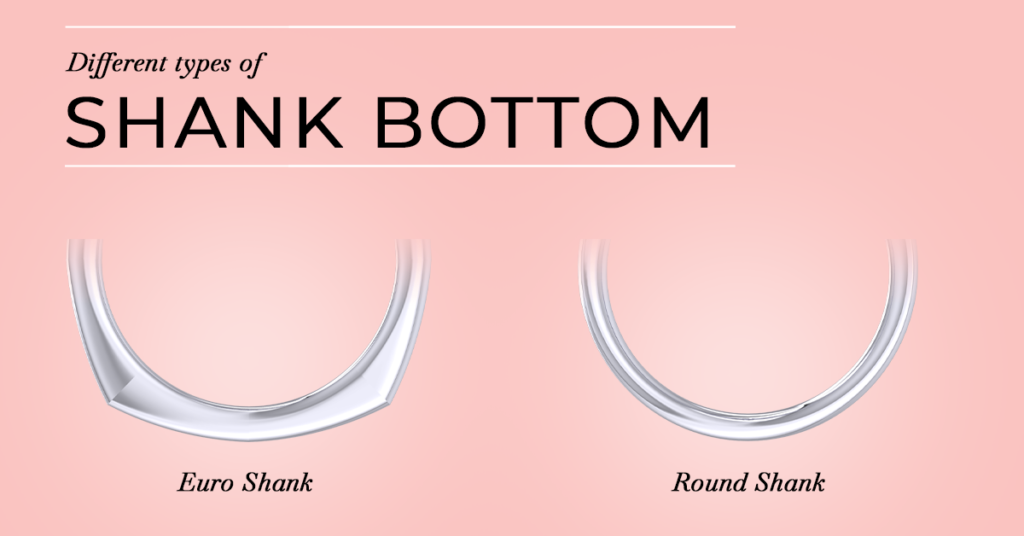
Just like there are many different type of shanks there are also mank different type of bottoms of shanks. The most popular amongst them are
Flat Shank: As the name suggests, the bottom of this shank is flat, providing a comfortable fit for the wearer. Flat shanks are also easy to resize, making them a popular choice.
Euro Shank: This shank is designed to prevent the ring from spinning on your finger. It features a flat bottom that curves inward towards the center stone, creating a slight bump. This bump keeps the ring from sliding around, and it also adds extra support to the center stone.
Round Shank: This is the most traditional type of shank, with a smooth and rounded bottom that feels comfortable on the finger. The rounded shape makes this shank easy to resize, but it may not provide as much stability as other types of shanks.
There are several types of settings that can be used for the shank in a diamond engagement
ring, each with its own unique characteristics:
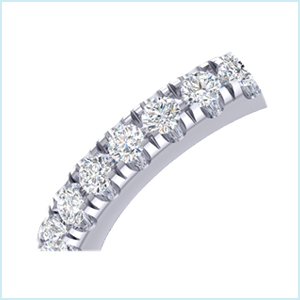
In this dramatic setting the diamonds are set close to one another with small beads of metal. The metal beads are so small that they are not easily visible allowing more of the diamond to be visible enhancing the sparkle of the jewelry. Jeweler’s work with high precision tools and often also with lasers to set stones with this technique.
Like micropave this technique incorporates delicate V-shaped cut out under each diamond allowing even less metal to be visible enhancing the look and sparkle of the diamonds.
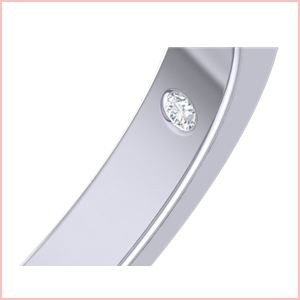
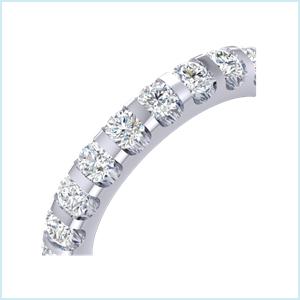
Scallop setting has delectable U-shaped cut outs under the diamonds giving a distinctive look and feel to the ring.
Channel setting is a classic and clean setting style. As the name suggest has the diamonds held between 2 metal walls or channels.
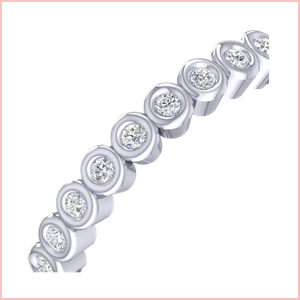
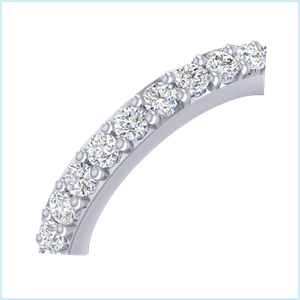
In this versatile style two adjoining stones are held together by the same prong thus giving a tighter and more symmetrical look.
This is by far the most common and widely used setting type. In this technique each diamond is held in place with a tiny metal prong which may be rounded, flat, pointed or V-shaped as per the design.
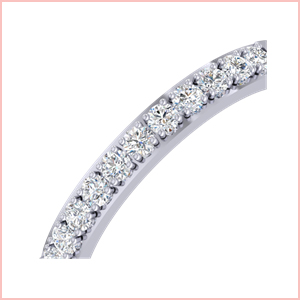
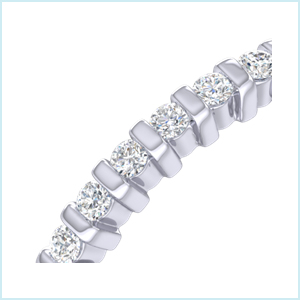
In this elegant setting style, the diamonds are held together with bars of metal on either side. This method is used when the stones a bit bigger and fewer to set.
In this technique the diamonds are enclosed in metal. This adds security and a distinctive clean design element to your ring.
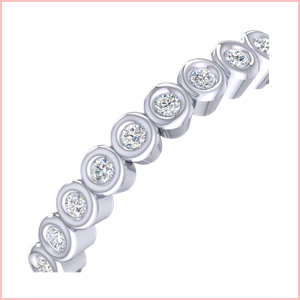
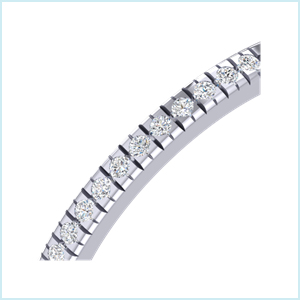
In this technique the diamond is set low on the metal which has delicate fish tale shaped cuts giving it a clean flushed appearance
In this sleek technique the diamond is set individually directly into the metal without any prongs
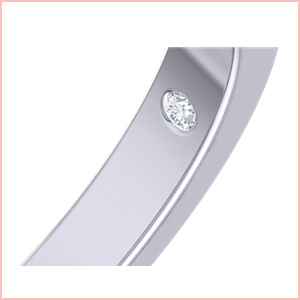
Similar to the shank there are several types of settings that can be used for the centre stone in a diamond engagement ring, each with its own unique characteristics. Some of the popular type of head settings are
Prong Setting: This is the most popular setting for diamond engagement rings. It consists of small metal prongs that hold the diamond securely in place while allowing maximum light to enter the stone, making it appear more brilliant.
Bezel Setting: In this type of setting, the diamond is surrounded by a metal rim that holds it securely in place. The rim can be full or partial and can be straight or curved. The advantage of this setting is that it offers a high level of protection for the diamond.
Tension Setting: In this type of setting, the diamond appears to be suspended in mid-air with no visible means of support. The diamond is held in place by the pressure of the metal band that surrounds it. This setting requires great skill to create and offers a unique and modern look.
Halo Setting: This type of setting features a center diamond surrounded by smaller diamonds or gemstones. The smaller stones create a halo effect that makes the center diamond appear larger and more brilliant.
Cathedral Setting: In this setting, the center diamond is held high above the shank of the ring by arches of metal that resemble the arches of a cathedral. This setting offers a classic and elegant look.
Miracle Plate Setting: In this sleek technique the diamond is placed on a textured plate creating a look of a bigger solitaire.
The best type of setting for an engagement ring is a matter of personal preference and style. Each setting has its own unique advantages and can be customized to fit the wearer’s tastes and needs.
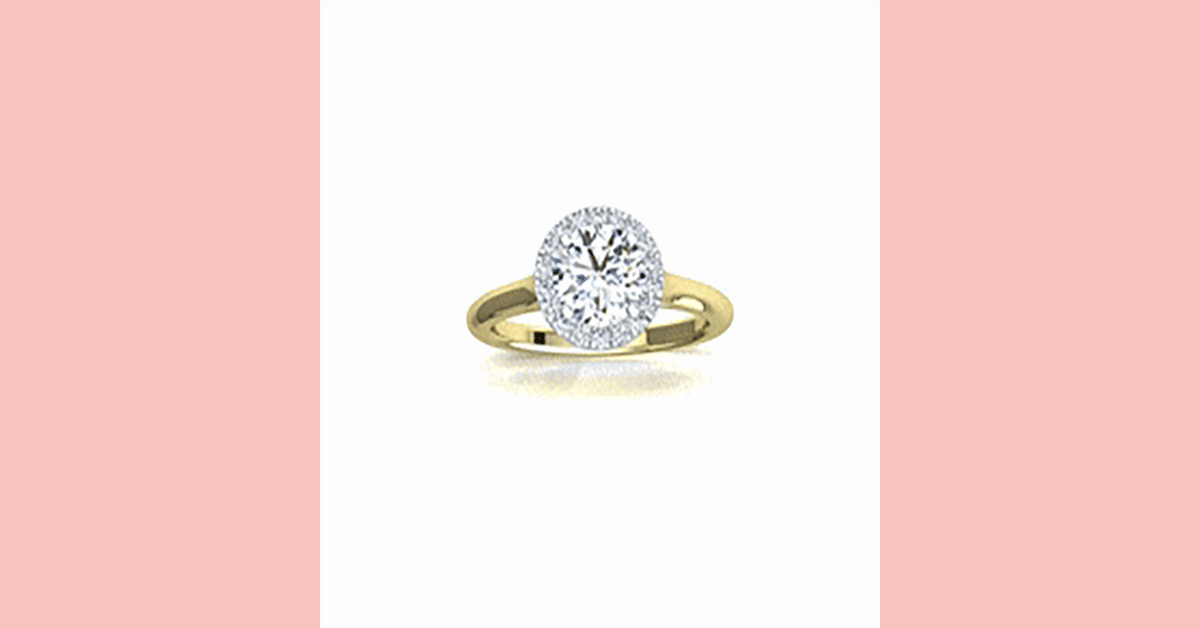
With the information provided in this blog post, I hope I have helped you can confidently navigate the terminologies you will hear tossed around when you to to buy an engagement ring. understanding the parts of a diamond engagement ring and the different types of settings and shank designs is essential to make an informed decision before buying one. Whether you prefer a straight shank, tapered shank, knife-edge shank, bypass shank, split shank, pinched shank, cathedral, or Euro shank, and whether you like a prong setting, bar setting, bezel setting, or halo setting, you can now make a choice that suits your personal style and preferences. Remember, the choice of engagement ring is a significant decision, and it should reflect your personality and symbolize your love story.
There are several types of diamond settings that are commonly used in jewelry making. Some of the most popular diamond settings are Prong settings , Bezel setting, Channel Setting, Pave Setting, Tension setting, cluster setting to name just a few. The type of setting that is best for you will depend on your personal style, the type of jewelry you are looking for, and your budget
The safest setting option is generally considered to be the bezel setting in which a thin metal band encircles the diamond and holds it securely in place, providing a high level of protection against damage or loss. It is however important to note that no diamond setting is completely fool proof, and it’s still possible for a diamond to become damaged or lost even with a bezel setting. It’s is therefore important to consider personal style and aesthetic preferences when choosing a diamond setting, as well as other factors such as budget and the type of jewelry piece.
A floating style diamond setting is a type of tension setting that creates the illusion that the diamond is “floating” in the center of the ring or pendant. In this type of setting, the diamond is held in place by just the right amount of pressure from the metal around it creating a clean and modern look that is especially popular in contemporary jewelry designs.
The part of a ring that encircles the finger. The shank is the lowest part of the ring, encircling the finger, but not including the setting. Because the shank is in direct contact with the finger and moves around constantly, it will wear down over time.
There are a variety of setting techniques used to secure and set diamonds and gems. For example, the classic prong setting gives a diamond greater prominence while reducing the appearance of the metal, while a bezel setting creates the illusion of a larger diamond and adds a more dramatic effect.
There are many popular shank designs, from simple and traditional to creative and unusual. Ring shank designs will vary based on shape, width, and depth and include straight shank, tapered shank, knife-edge shank, bypass shank, split shank, pinched shank, cathedral, and Euro shank.
There are many popular shank types, from traditional to modern. Each type has its own style, thus each shank type varies from one another.
Shop by metal
Shop by diamond
@ All rights reserved La Joya Jewelry Inc